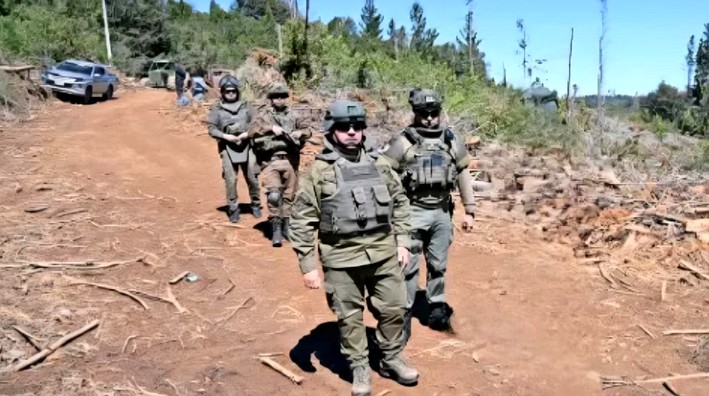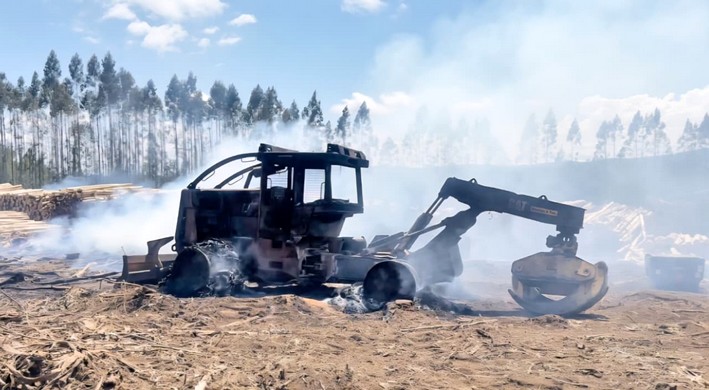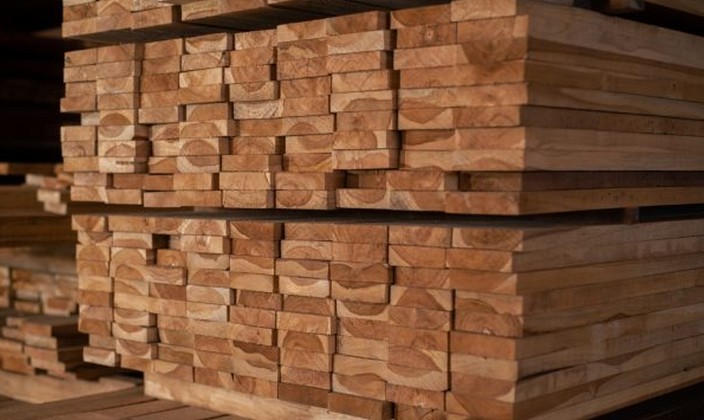The Impact of Violence in the Southern Macrozone on Education: 25 Schools Burned and Nearly 900 Students Affected
On March 13 of this year, residents of the rural area where the Las Cardas school is located, in the commune of Victoria in La Araucanía, watched helplessly as the educational facility was consumed by flames set by antisocial individuals around 4:30 a.m.
The fire spread quickly, reducing classrooms and spaces that housed around 43 students from the area to ashes. Upon finding banners at the scene, they realized it had been an attack, adding to others in the commune that also affected rural educational institutions, such as the Trangol and Pailaquehue schools.
The latest incident of this kind occurred on June 2, also in Victoria. This time, the attack targeted the community of the Bollilco school, where members of the Mapuche Malleco Resistance entered to set fire to the educational facility. A teacher, who worked as an educator and night watchman, had to escape through a window to save his life from the flames, which soon completely destroyed the school. A subsidized private institution managed by the Christian and Missionary Alliance Church, it also served children from nearby Mapuche communities.
25 Schools Destroyed Since 2018
An analysis by El Líbero, based on publicly available data from the Ministry of Education, enrollment records, and a review of events related to intentional arson over the years, reveals that nearly 900 students and their families have been victims of violence in the Southern Macrozone since 2018. This is due to significant damage to their schools caused by arson attacks.
By 2021, the count was 15but today, a total of 25 rural schools have been destroyed as a result of these attacks. The damage is concentrated in La Araucanía, with 15 educational facilities targeted, followed by Biobío with 9 and Los Lagos with one.
It should be noted that some reports from the Ministry of Education include fires of accidental origin, which have been excluded from this count and data presentation.
The List
The affected schools in La Araucanía are: Antu Rayen Kindergarten in Ercilla, Trapilhue Private School in Freire, Pidima Kindergarten in Ercilla, Tricauco School in Ercilla, Kimun Newen School in Victoria, Pailahueque School in Victoria (burned 3 times), Radalco School in Curacautín (affected twice), Alto Meco Rural School in Lautaro, Alto Meco Kindergarten in Lautaro, Los Cerezos Rural School in Perquenco, Trangol School in Victoria, Elena Müller School in Los Sauces, Rariruca School in Curacautín, Las Cardas School in Victoria, and Bollilco School in Victoria.
In the IX Region, 475 students have been affected.
In Biobío, the nine affected institutions were: Cerro Negro School in Tirúa, Pedro Etchepare Borda School in Cañete (burned twice), Ana Molina School in Tirúa, Juan Aguilera Jerez School in Cañete, Felipe Cubillos Sigall Educational Center in Arauco, Semillitas Kindergarten in Cañete, Pichi Ayen Kindergarten in Tirúa, Grano de Trigo School in Contulmo, and Las Misiones School in Tirúa.
This situation has impacted 359 students.
In Los Lagos, the Cristo Rey Rural School in Puerto Varas was burned in April 2020. This center had 28 enrolled students.
Children Suffer the Consequences of Burned Schools
The threat today is directed at schoolchildren, who are at the center of a complex scenario for rural education in the Southern Macrozone, marked by fear, uncertainty, and violence. This was one of the issues addressed by the regional governor of La Araucanía, Luciano Rivas, in hispublic address on June 9. Before authorities and the presidential delegate, he stated, "We cannot allow our children to suffer the consequences of violence and lack of security. It is a severe violation of human rights."
"It is essential for the State to take responsibility and implement strong measures to protect our children. Likewise, institutions like the UN and UNICEF must actively and effectively engage in resolving this serious problem," he asserted. The governor went further, urging the government to pass "a law that says, 'Burned school, rebuilt school.' Enough of territories being intimidated without responses from the State and its institutions."
In addition to the alarming data on burned schools and affected children, there are the poor results of thelast year's Simce test. These were the worst scores in mathematics and reading since at least 2012. In La Araucanía, second-year high school students recorded the second-lowest national average in mathematics.
Rural Education in Flames
Rosendo Morales Cayuleo is the director and administrator of the Patria Nueva rural school in the commune of Freire. He was also president of the Mapuche School Administrators Association (Asoma), an experience that has given him insight into the reality faced by rural schools in the Southern Macrozone.
Speaking with El Líbero, the educator explains the importance of rural education today, as well as the damage caused by attacks on schools in these remote areas for their inhabitants and families. "If children don’t go to school, if they don’t receive support, they have no way to progress. So, those of us serving the community through our schools carry a deep commitment to uplifting our children, because education is the only way to overcome poverty. We play a crucial role in society," Morales says.
Regarding the attacks that have reduced dozens of rural schools to ashes in recent years, Rosendo Morales explains that the situation is especially complicated today, particularly because many institutions that refuse to collaborate with violent groups face constant threats if they do not comply with demands.
"When a school is burned, it’s very complicated. It might be a strategy to silence, because many administrators don’t engage politically. They’re independent. So, when one refuses to cooperate with these groups that burn schools or cause harm, one becomes a target—either attacked or harmed," explains the Mapuche administrator.
However, if the affected school is not municipal or state-run but a subsidized private institution, the situation is even worse, according to Morales. This is becauseinsurance coverage is nearly nonexistentdue to cost or unavailability, making it virtually impossible to recover the infrastructure after an attack or accident.
"When a municipal school is burned, the State replaces it. When a subsidized private school is burned, that school dies there, because the administrator doesn’t have the resources to rebuild, and if they request support from the ministry, they won’t get it—simply because it’s not municipal, and there’s no way to obtain funding," he warns.
It’s the perfect mix of factors for rural education in the Southern Macrozone to weaken progressively, with all the complications this brings for low-income families who rely on these schools, where many children also receive their meals.
Source:www.ellibero.cl

















